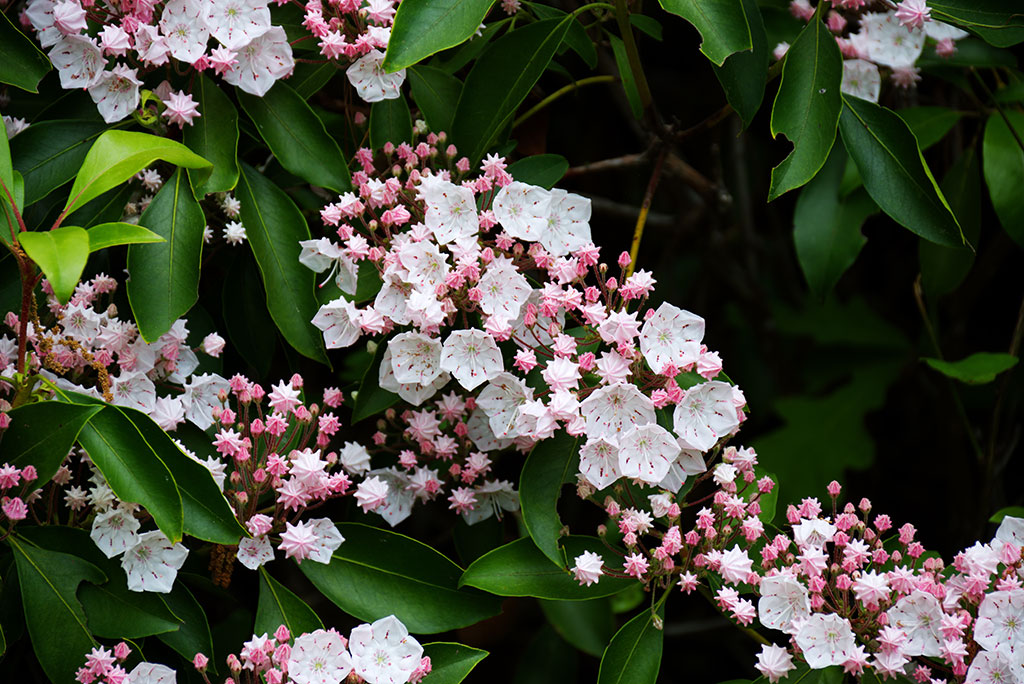Estimated reading time: 3 minutes
I’ve always loved the outdoors, but I never really knew much about identifying plants before college. When we started learning plant ID, we’d do these “nature walks” as part of our ecology class, where our professor would take us outside to identify trees and shrubs around campus. Then, at the end of sophomore year, we embarked on a week of field trips around central Pennsylvania to see more than our campus walks had to offer.

On this trip was the first time I was exposed to mountain laurel (Kalmia latifolia) in the wild. Well, it probably wasn’t even close to the first time, but it’s the first time the plant was pointed out to me by name. Previously, I’d recognized the name since the mountain laurel is the state flower of Pennsylvania. I was pretty confused to learn that a flowering shrub could even qualify as a state flower, but that’s besides the point. Mountain laurels, especially their cultivars, are covered in beautiful, showy clusters of five-sided cup-shaped flowers.
Mountain laurel bloom around June, so I wasn’t able to see any of their pink and white flowers on our early May field trip. What I did see, however, were hundreds of plants with blighted leaves. This blight, caused by the fungus Diaporthe kalmiae, produces brown spots that can cover the shiny green leaves of the shrub.
Luckily, there are things you can do to prevent this from happening to your mountain laurels While mountain laurel will tolerate almost any sun condition, they thrive naturally in the understory of Appalachian forests and thus prefer part shade. They may be at higher risk of blight when planted in deep shade, where moist conditions can allow fungi to thrive. Additional measures to protect mountain laurels from blight include maintaining proper soil health, mulching, fertilizing, and careful watering. Ideally, plants should be watered at ground level; however, if you must water your mountain laurels from above, do so in the morning so the sun can dry the leaves. To prevent blight spreading, branches with blighted leaves should be removed promptly.
A variety of mountain laurel cultivars are available, producing different bloom colors and growing to different mature sizes. “Elf,” for example, produces pink buds that flower into pale pink, almost white flowers and grows to a petite 2-3 feet, while “Olympic Fire” grows at least double that size with scarlet buds and pink flowers.

Leave a Reply